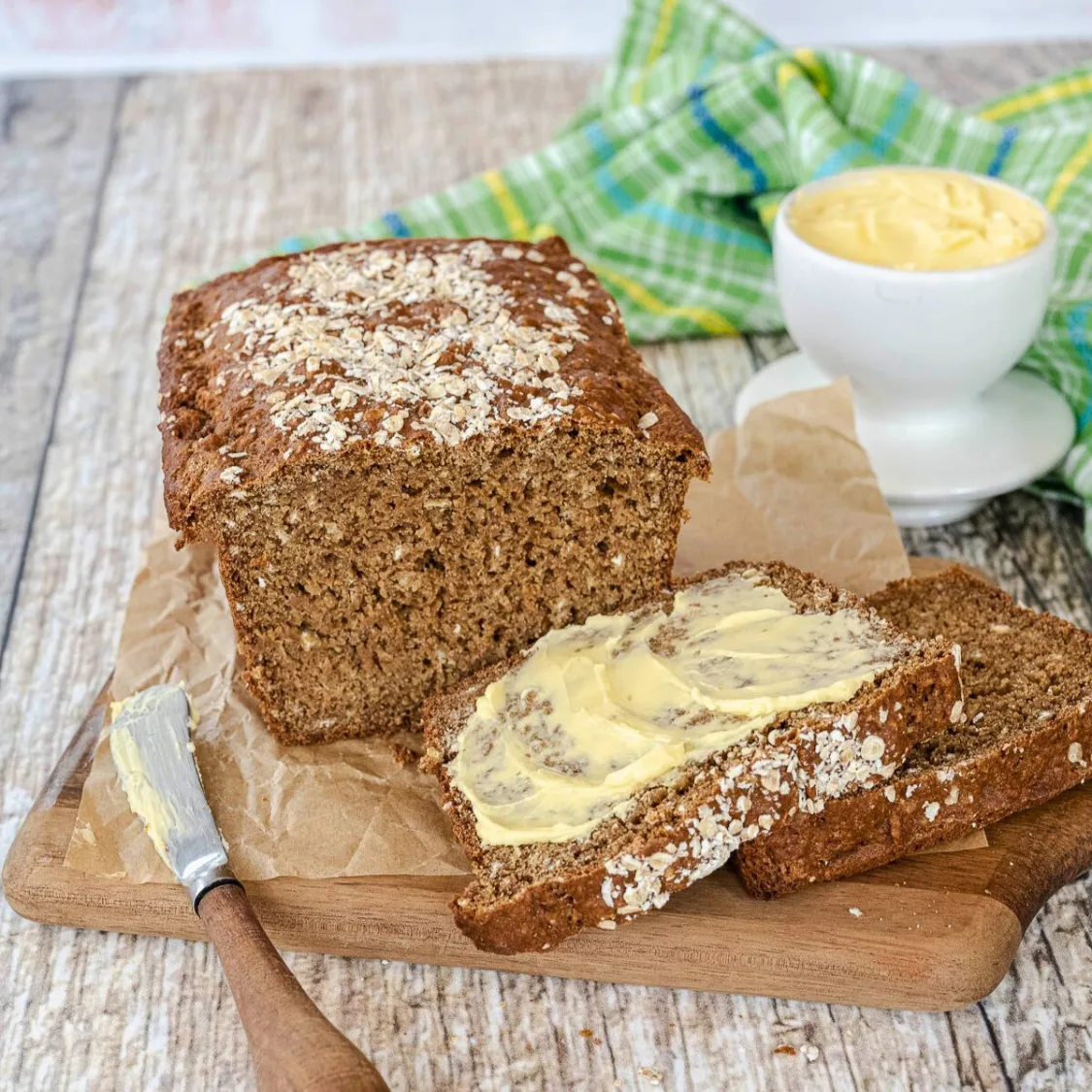
Brown Bread
Traditional Irish brown soda bread made with whole wheat flour, buttermilk, and baking soda.
Ingredients
- •Whole wheat flour
- •All-purpose flour
- •Baking soda
- •Salt
- •Buttermilk
- •Oats
- •Honey
Instructions
Mix Dry Ingredients
Combine flours, baking soda, and salt
Add Wet Ingredients
Mix in buttermilk and honey until dough forms
Shape
Form into a round loaf and cut a cross on top
Bake
Bake until golden brown and hollow sounding when tapped
Irish Brown Bread, also known as wheaten bread or brown soda bread, is a hearty, rustic loaf that has been a staple of Irish cuisine for generations. Unlike traditional yeast breads, this quick bread relies on the chemical reaction between buttermilk and baking soda for leavening, resulting in a dense, nutty-flavored bread with a tender crumb and crispy crust.
The origins of Irish Brown Bread can be traced back to the 1800s when baking soda was first introduced to Ireland. This innovation revolutionized bread making, as it allowed people to create bread quickly without the need for yeast or an oven, as it could be cooked in a bastible (a cast-iron pot) over an open fire. The bread became particularly popular during times of economic hardship due to its simple, affordable ingredients.
Making Irish Brown Bread is remarkably straightforward, which adds to its enduring appeal. The key to perfect brown bread lies in handling the dough with a light touch - overmixing can lead to a tough loaf. Traditional recipes combine whole wheat flour, all-purpose flour, baking soda, and salt, then mix in buttermilk until a sticky dough forms. Some variations include a touch of honey for sweetness and oats for extra texture. The signature cross cut on top of the loaf isn't just decorative - it helps the bread cook evenly and, according to Irish folklore, lets the fairies out!
Modern bakers have created numerous variations while maintaining the bread's rustic character. Some add seeds like sunflower or pumpkin for extra nutrition and crunch, while others incorporate dried fruits and nuts for a sweeter version. Treacle or molasses can be added for a darker, richer loaf, and some recipes include wheat germ or bran for additional fiber.
In Ireland, brown bread is a versatile food enjoyed throughout the day. It's commonly served at breakfast, warm from the oven with generous amounts of Irish butter and marmalade. For lunch, it makes an excellent sandwich bread or accompaniment to soup, particularly with seafood chowder. Many Irish restaurants serve it as a complimentary starter with whipped butter, and it's often used to soak up the rich gravy of Irish stews.
From a nutritional standpoint, Irish Brown Bread is a relatively healthy choice. The whole wheat flour provides good amounts of fiber, B vitamins, and minerals. A typical slice contains about 120-150 calories and is low in fat. The bread is particularly filling due to its high fiber content, making it an excellent choice for those watching their weight. However, those with gluten sensitivities should note that this bread contains wheat. Some modern recipes offer gluten-free versions using alternative flours, though these may not achieve the same traditional texture and taste.
